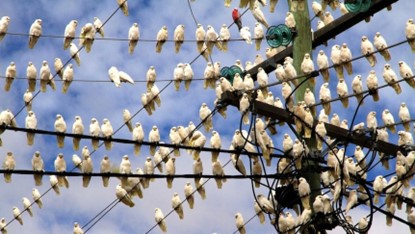Corella Management

The Shire of Wongan-Ballidu have engaged West Australian Field & Game Association as a contractor to assist with the management of Corella in our region.
West Australian Field & Game Association will be carrying out a corella cull for the management and control of corellas within our area. This management strategy is in place for pest control due to the damage and impact on social and environmental issues caused.
Next Scheduled Cull:
Saturday 31st January
Sunday 1st February
Please note Police are aware and all safety measures will be in place for the shoot. West Australian Field & Game Association are an accredited organisation for the culling of corellas.
Access Restrictions:
Please be informed that the upcoming shoot event is NOT open to the public. Once the cull begins at the specified times mentioned above, there will be NO access to the pavilion and football ovals. Your understanding and cooperation are greatly appreciated to assist in making it a smooth and safe event for everyone.
Species
There are three main species of white corella found in the central and northern Wheatbelt, these are the Western Corella, the Little Corella and the Long-Billed Corella. All three of these species are declared pests under the Biosecurity and Agriculture Management Act 2019 (BAM Act 2019).
A fourth species, the Muir’s Corella, is found in the southern Wheatbelt and further south around Tone Bridge, Rocky Gully, Frankland River and Lake Muir area. This species is also a declared pest.
Why do they need management?
Human activity has enabled corellas to breed in large numbers, well above what would have been possible prior to European settlement. Consequently, the birds cause negative environmental, social, and economic impacts.
Environmental Impacts
Descending in large numbers, corellas will strip trees of their leaves. They can turn a healthy tree into a stag, with no leaves on its upper branches through their chewing and breaking off branchlets. In the Wheatbelt, where mature native trees are scarce, this can have a devastating environmental impact.
Corellas compete with endangered black cockatoo species and other native cockatoo species such as the Major Mitchell for nesting hollows. Corella’s have been reported removing eggs and hatchlings of black cockatoos from the hollows so that they can take over the nest.
Social Impacts
When congregating in large numbers, corellas make a large amount of noise when attracted to feeding sits and congregating at roost sites disturbing the tranquillity within an area. The droppings can foul trees, washing on clothes lines, buildings and recreational areas.
Economic Impacts
Corellas have a varied diet and are naturally very curious, traits that often result damage to public and private amenities. They chew through power lines, damage vehicles, shops and housing with their powerful beaks. They can often be seen on sporting fields or large areas of grass where they will pull up and damage both synthetic and natural turf. They damage crops, grain storage facilities and foul water bodies. Corellas have even been cited as having a negative impact on local tourism.